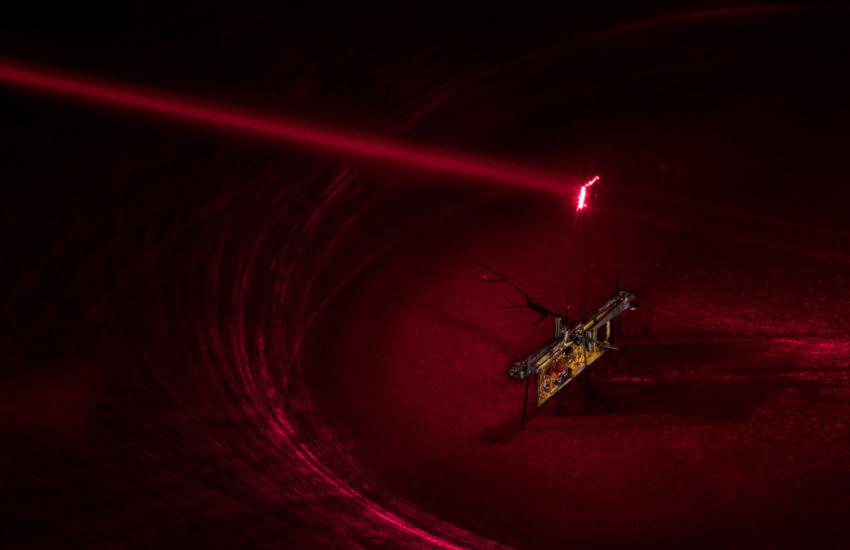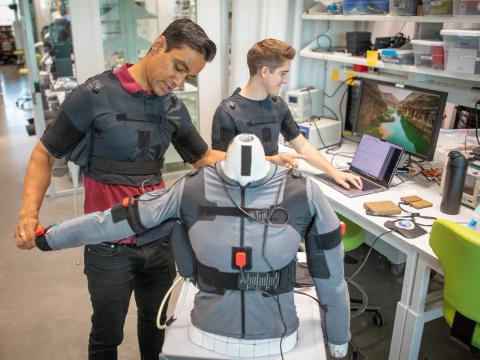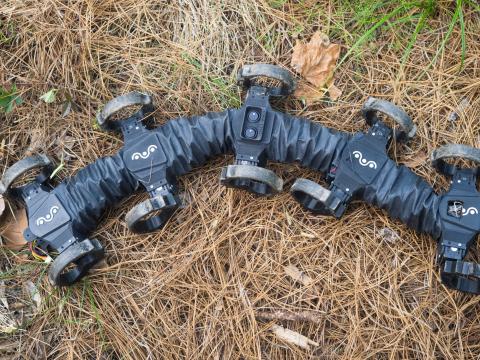Researchers Advance Flight for Insect-Sized Robots
Within two years, researchers at the University of Washington, Seattle, intend to flight-test a package of commercial flight control sensors on the RoboFly, which already has advanced the field of insect-inspired drone research. Ultimately, the technology could help enable flight for robots as small as gnats, which could be cheaply deployed by the thousands for a range of missions, including search and rescue, environmental research and space exploration.
The object of the fundamental research is to explore flight control options for the smallest of aerial vehicles, specifically those weighing in at less than a single gram. Flight is difficult for teeny bots in part because of the size, weight and power limitations of the necessary hardware. Performing controlled flight without feedback from external sensors has been a challenge.
The hovering maneuvers common to insects are especially complicated for miniature machines to mimic. “For the current state of art for hovering of small robots they use the laser range finder and also the gyroscope, which are very heavy, very power consuming and also very big,” explained Zhitao Yu, a University of Washington doctoral student and research assistant who coauthored the paper.
The University of Washington team took a novel approach inspired by the ability of flies to sense wind with their feather-like antennae so that they can control flight. The researchers sensed airspeed with a two-milligram accelerometer built by mCube Incorporated, San Jose, California. They paired that with a microcontroller and an optic flow camera, the OVM6948 from Omnivision Incorporated, Santa Clara, California. They tested their concept using a palm-sized drone, the Crazyflie 2.1 built by Bitcraze, which is headquartered in Sweden.
The researchers announced the results of experiments and simulations in a paper published in Science Robotics, which was coauthored by Yu, Sawyer Fuller and Yash Talwekar. “The smallest robot to perform controlled hovering uses a sensor suite weighing hundreds of milligrams. Here, we demonstrate that an accelerometer represents perhaps the most direct way to stabilize flight while satisfying the extreme size, speed, weight, and power constraints of a flying robot even as it scales down to just a few milligrams,” they wrote in the introduction.
Yu indicated that a working gnat-bot will require additional hardware improvements. “This paper is a critical step towards a flyable gnat robot. It is possible we can build a robot which weighs about 10 milligrams. It’s like a grain of rice,” he said. “It’s very hard to build that, but this paper figures out whether we can build a sensing system to stabilize the gnat robot in the air.”
Replacing heavier hardware was only part of the challenge. To make the system work, the researchers also had to develop software efficient enough to do the job. “From the algorithm side, there are also some challenges, like how to make the optical flow estimations efficient enough without much power consumed,” Yu added.
The next step, which will likely occur within one or two years, will be to test the solution on the University of Washington team’s own RoboFly, which is powered by a laser beam. RoboFly was the first insect-sized robot to fly without being tethered to wires, according to a university press release published in 2018. To cut the electrical cord, researchers used a tiny onboard circuit to convert the laser energy into electricity to operate the wings. “Before now, the concept of wireless insect-sized flying robots was science fiction. Our new wireless RoboFly shows they’re much closer to real life,” Fuller, an assistant professor and researcher for both projects, said in the press release.
RoboFly weighs about 100 milligrams, slightly more than a toothpick, and a successful flight would put researchers one step closer to a gnat-sized system. “We are working on that. What we are doing is installing the accelerometer and also the camera on the RoboFly and dealing with the hardware-software interface and also the firmware. I think that in one or two years, we can test it,” Yu offered.
Because the technology is being developed under a basic research grant, Yu suggests it could be five years before a product will be ready. “But in the meantime we have spinoffs. We hope this technology could be used, for example, to track human body motions or the flight motions of small insects,” he said in an email following a phone interview with SIGNAL Media. Human motion tracking could include rehabilitation, fitness or sports tracking, such as improving a swing. Insect tracking might involve locating murder hornet nests or researching the effect of pesticides on bee navigation.

The research is funded by a National Science Foundation grant to develop visual flight control technologies for the smallest of aerial vehicles. “The goal of this project is to realize autonomous robots as small as bumblebees and even gnats by creating design guidelines for their vision-based control systems. This will have a revolutionary impact on robotics,” the foundation says on a webpage about the program.
“Compared to larger robots, insect robots will deploy in larger numbers, in more confined spaces and in closer proximity to humans without impact hazard,” the National Science Foundation website adds. Furthermore, they will collect small amounts of energy available in the environment, such as sunlight. “As a result they will sense environmental conditions in far greater detail than is currently possible.”
Potential uses include locating methane, detecting incipient fires, monitoring agriculture from within the plant canopy, inspecting confined spaces and exploring outer space at reduced launch cost.
The Defense Advanced Research Projects Agency (DARPA) also has shown interest in insect-inspired robots. “For example, last year the agency completed the SHort-Range Independent Microrobotics Program, which developed actuation mechanisms and power-efficient voltage conversion circuits for microrobotic platforms. The primary technical focus areas were the efficiency, robustness, and force output of millimeter-scale actuators, and the power and energy capacity of batteries and chip-level power converters. Agency officials envisioned using the microbots for search and rescue following a natural disaster or investigating hazardous environments.





Comments